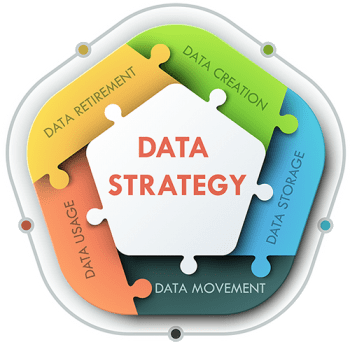
A data strategy is a comprehensive plan that outlines how an organization will manage, govern, and leverage data as a strategic asset to achieve its business objectives. It involves making informed decisions about collecting, storing, processing, analyzing, and sharing data. A well-defined data strategy aligns with the overall business strategy and helps organizations derive value from their data while ensuring data quality, security, and compliance.
Key components of a data strategy may include:
Data Governance:
Establishing policies, roles, responsibilities, and processes for managing data throughout its lifecycle. This ensures data quality, integrity, and compliance with regulations.Data Management:
Defining how data will be collected, stored, processed, and maintained. This includes data architecture, databases, and data integration strategies.Data Quality:
Ensuring that data is accurate, reliable, and consistent. Implementing measures to monitor and improve data quality over time.Data Security and Privacy:
Implementing measures to protect sensitive data from unauthorized access or breaches. Ensuring compliance with privacy regulations and industry standards.Data Analytics and Business Intelligence:
Outlining how the organization will use data for analysis, reporting, and decision-making. This may involve implementing analytics tools, data visualization, and creating a data-driven culture.Data Lifecycle Management:
Managing data from its creation to its retirement or archival. Defining processes for data retention, disposal, and archival.Data Integration:
Ensuring that data from various sources can be integrated and used cohesively. This may involve implementing data integration tools and creating data pipelines.Technology Infrastructure:
Defining the technology stack needed to support the data strategy, including databases, storage, processing, and analytics tools.Data Culture and Training:
Fostering a culture within the organization that values and understands the importance of data. Providing training and resources to employees to enhance data literacy.Measuring and Monitoring:
Establishing key performance indicators (KPIs) to measure the success of the data strategy and implementing monitoring mechanisms to track progress.